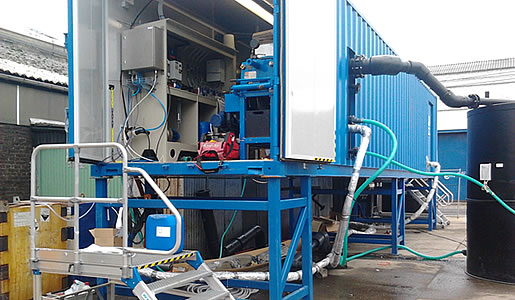Operation
Cyanides (CN-) are mainly used in metal surface treatment processes. It is a class of toxic components which have to be removed prior to further treatment and effluent discharge. Cyanide-free alternatives to electroplating treatments have already been introduced widely (e.g. galvanising) but in exceptional situations one can still find cyanide applications.
In order to detoxify free dissolved cyanides, sodium hypochlorite (NaOCl) is dosed to the wastewater. Nitrites, sulphide and sulphite are simultaneously oxidized by this agent. The residues are further removed by e.g. conventional physicochemical wastewater treatment.
Principle
In two intermediate steps, cyanides are oxidised by means of NaOCl under alkaline conditions, forming nitrogen gas as the final product. A pH probe controls the dosing of chemicals. The reactions are as follows:
NaCN + NaOCl => NaCNO + NaCl
2 NaCNO + 3 NaOCl + H2O => 3 NaCl + N2 ↑ + 2 NaHCO3
Realisation
Realisation example of a physicochemical treatment plant with cyanide removal, at a production plant including various surface treatments. The wastewater treatment plant is implemented and monitored by Trevi.

A physicochemical treatment plant in a container with prior cyanide removal.
Operational costs
Main operational costs consist of process control chemicals.
Approach by Trevi
Cyanide containing and cyanide-free wastewater must be separated at the source. Cyanide-free alternatives can avoid a specific treatment. The wastewater containing free dissolved cyanides must be subjected to a cyanide detoxification. The resulting effluent can be further treated with the other wastewater streams in the coagulation-flocculation process. The source-separation of wastewater loaded with cyanides and other wastewaters reduces chemical costs and allows to build compact water treatment plants. In order to ensure the desired effluent quality, the design of a new wastewater treatment plant is supported by representative pilot tests.